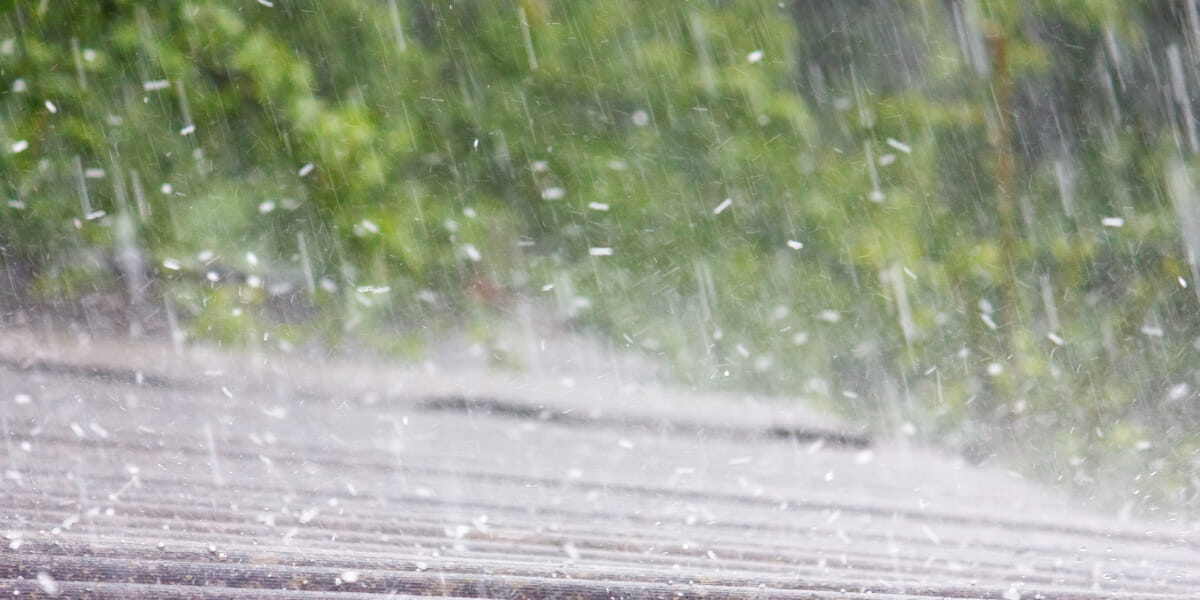When hail rips through a residential area, we all grimace and keep our fingers crossed that our roofs or cars are not damaged in the storm. But what happens when they are? If a homeowner has property insurance, they will be filing a hail damage claim with their insurance carrier. But, how long do they have to file the claim, and what is required to get it approved? Keep reading to understand how and when a homeowner should file a hail damage roofing claim.
How soon after a hail storm should a homeowner file a claim?
 When hail damages a home, insurance companies ask policyholders to file promptly. And, homeowners will want to listen because waiting may cause issues in getting the claim approved. If you're wondering how long after hail damage you can file a claim, most standard policies require filing a claim within one year of determining that a hail storm damaged your roof or other parts of the house.
When hail damages a home, insurance companies ask policyholders to file promptly. And, homeowners will want to listen because waiting may cause issues in getting the claim approved. If you're wondering how long after hail damage you can file a claim, most standard policies require filing a claim within one year of determining that a hail storm damaged your roof or other parts of the house.
In many states, where hail is less frequent, a standard homeowners policy includes hail damage to a roof as part of your protection coverage.
The basic steps of a hail claim: Homeowners file a claim, pay the policy deductible, and then the insurer pays to fix the damage. A deductible is an amount you must pay toward a loss before your insurance company pays a claim. That seems simple, but there are many nuances that go into this process that can cause the claim to go back and forth between different hands before the roof can be repaired.
What goes into a hail damage roof claim?
-
Local contractors provide estimates - After damage has occurred, homeowners will contact local contractors (or they will come knocking) to inspect the roof and provide initial estimates. This provides a launching point for the homeowner to begin conversations with their insurance company. That said, the insurance company will come with their own Insurance Adjusters to adjust the final estimate.
-
Insurance Adjuster comes to modify the estimate - After filing a claim, the homeowner will be asked to schedule an appointment with an insurance adjuster. If possible, ask a trusted roofing contractor to attend the meeting with the adjuster. That helps ensure you get a fair assessment and that damage isn't overlooked. Better yet, make sure they are both using the same tools for writing the estimate so that they are consistent.
-
The contractor will complete the repairs - Line items will be added and removed based on the building codes adopted by the jurisdictional authority. Once the claim has been approved and the insurance company and contractors have reached a settlement for the cost of repairs, work can begin on the roof.
- The homeowner's homework - Because contractors and adjusters both need to come to an agreement on the roofing estimate before work can begin, it is important for this process to go as smoothly as possible. The contractor and adjuster both have to call the city and county to gather information about the home for the estimate. The homeowner can make sure that they get their home repaired quickly by making sure that their contractor and adjuster are both using the same tools to gather information about the home. Using tools (like OneClick Code) to determine what building codes and permits are required, will make the claim process faster which means the homeowner can get their roof repaired quickly and with all the right materials covered.
What goes into a roof repair estimate after hail damage
-
Quantity of all materials needed (include all roofing items including vents, flashing or other wind or hail damaged items)
-
Labor charges
-
Work specifications
-
Approximate starting and completion dates
-
Payment procedures
-
Building permits secured (if applicable)
-
Warranty details – review all conditions and make a note of any that may void the warranty.
Summary
When it comes to hail damage on your roof, it is important to have all of the information at your fingertips. Or, at least in the hands of your contractor and adjuster. Did you know that contractors and adjusters can now know the date and size of hail that hit a home and have the reports to back up the hail damage claim? Using tools like HailTrace and OneClick Code can keep your roofing claims accurate and make sure that your roof is repaired as quickly as possible.


